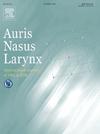使用日本国家数据库的全国鼻出血治疗描述性流行病学研究
IF 1.5
4区 医学
Q2 OTORHINOLARYNGOLOGY
引用次数: 0
摘要
目的分析日本鼻出血治疗的全国模式,包括时间趋势、人口分布和区域差异。这是一项使用国家行政数据库的全国性描述性观察性研究。方法分析2019-2022财政年度国家健康保险理赔数据库的公开数据,探讨两种治疗鼻出血的方法:纱布填塞止血和烧敷止血。治疗模式按月、年龄、性别和居住地进行评估。标准化索赔比率采用间接标准化进行区域比较。结果在研究期间,记录了870,819个纱布包装程序和523,591个烧化程序。两种程序均表现出一致的季节模式,在冬季(12月至2月)达到高峰。年龄分布呈双峰型,儿童和老年人发病率较高,所有年龄组均以男性为主。儿科患者更有可能接受纱布包装。地理分析显示,日本西部偏爱纱布包装,而日本北部则更频繁地进行烧灼,这表明与高纬度地区有潜在的联系。结论:这是第一个全国性的研究,旨在确定日本鼻出血治疗的季节性、人口统计学和地区差异。这些发现表明气候以外的因素可能影响治疗选择。本文章由计算机程序翻译,如有差异,请以英文原文为准。
Nationwide descriptive epidemiological study of epistaxis treatment using the national database of Japan
Objective
The aim of this study was to analyze nationwide patterns of epistaxis treatment in Japan, including temporal trends, demographic distributions, and regional variations. This was a nationwide descriptive observational study using a national administrative database.
Methods
We analyzed open data of the National Database of Health Insurance Claims from fiscal years 2019–2022 to examine two treatment procedures for epistaxis: hemostasis with gauze packing and cauterization. Treatment patterns were evaluated by month, age, sex, and prefecture of residence. The standardized claim ratio was calculated using indirect standardization for regional comparisons
Results
During the study period, 870,819 gauze-packing procedures and 523,591 cauterization procedures were recorded. Both procedures exhibited consistent seasonal patterns, peaking in winter (December to February). Age distribution followed a bimodal pattern, with higher incidence in children and older adult individuals, and a male predominance across all age groups. Pediatric patients were more likely to receive gauze packing. Geographic analysis showed a preference for gauze packing in Western Japan, whereas cauterization was more frequently performed in Northern Japan, suggesting a potential association with higher latitudes.
Conclusion
This is the first nationwide study to identify distinct seasonal, demographic, and regional variations in epistaxis treatment in Japan. These findings suggest that factors beyond climate may influence treatment selection.
求助全文
通过发布文献求助,成功后即可免费获取论文全文。
去求助
来源期刊

Auris Nasus Larynx
医学-耳鼻喉科学
CiteScore
3.40
自引率
5.90%
发文量
169
审稿时长
30 days
期刊介绍:
The international journal Auris Nasus Larynx provides the opportunity for rapid, carefully reviewed publications concerning the fundamental and clinical aspects of otorhinolaryngology and related fields. This includes otology, neurotology, bronchoesophagology, laryngology, rhinology, allergology, head and neck medicine and oncologic surgery, maxillofacial and plastic surgery, audiology, speech science.
Original papers, short communications and original case reports can be submitted. Reviews on recent developments are invited regularly and Letters to the Editor commenting on papers or any aspect of Auris Nasus Larynx are welcomed.
Founded in 1973 and previously published by the Society for Promotion of International Otorhinolaryngology, the journal is now the official English-language journal of the Oto-Rhino-Laryngological Society of Japan, Inc. The aim of its new international Editorial Board is to make Auris Nasus Larynx an international forum for high quality research and clinical sciences.
 求助内容:
求助内容: 应助结果提醒方式:
应助结果提醒方式:


